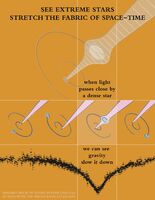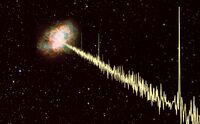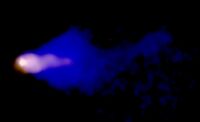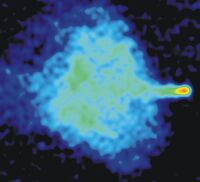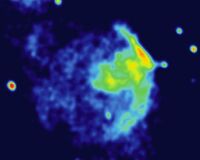Legacy Astronomical Images > Galactic Sources Series > Pulsars/Neutron Stars Unit
Description
A Neutron Star is the collapsed core of a massive star, formed after the star goes supernova. The name derives from the fact that neutron stars are so compact (one with the mass of the Sun will only be about as big as a city), that the electrons and protons of the atomic nuclei are jammed together into neutrons. A pulsar is a rapidly rotating neutron star that emits beams of radiation along a misaligned magnetic axis.
Collection Items
Collection Tree
- Legacy Astronomical Images
- Legacy Astronomical Images > Galactic Sources Series
- Legacy Astronomical Images > Galactic Sources Series > Pulsars/Neutron Stars Unit
- Legacy Astronomical Images > Galactic Sources Series

